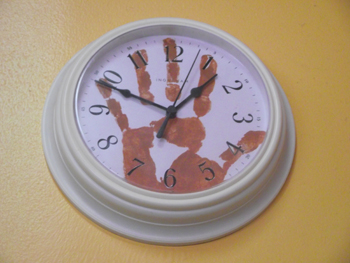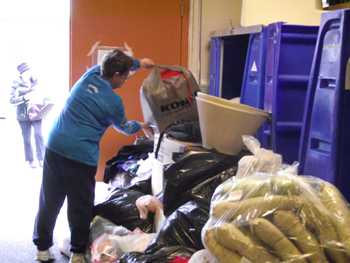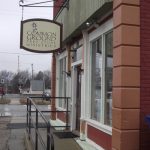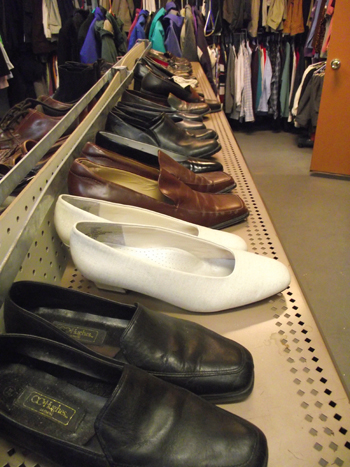Clean underwear, solid shoes, blankets and a warm cup of coffee. Simple items, but they make a world of 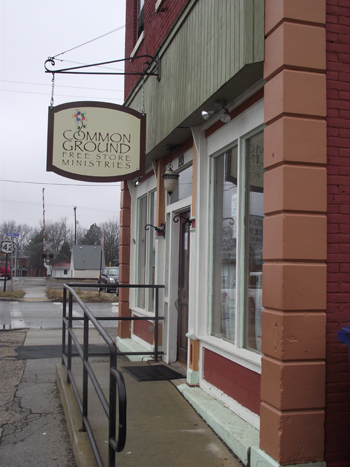
The heavy wooden door swings inward and blows a burst of cold air into the lobby. A man and a woman enter, dark hair matted with snowflakes. They rub their hands together briskly while taking a seat on the left side of the store.
“Get them a paper towel for their heads,” instructs the woman to my right. “They look freezing. Maybe you two would also like a cup of coffee?”
Beth Trigg, assistant director of the store, slowly sips her own hot beverage as she greets the visitors. She’s wearing simple shoes, jeans and a warm red jacket. Her no-nonsense approach to the store is like a mother caring for her children on a Sunday afternoon in the park. When she talks about the store, it’s clear she loves the place.
Trigg, who started as a volunteer more than four years ago, has worked in every capacity at the store. Cleaning toilets, organizing clothing, making pots of coffee and serving visitors have all previously fallen onto her duty list.
She said all of the wonderful volunteers are what makes the Free Store operate, but the patrons make it worthwhile. The store is open to any individual or family,. Pay stubs, social security cards and proof of welfare aren’t necessary for seeking help here.
“All of god’s people are welcome,” Trigg said. “The stories that turn out well are few and far between, but we have a relationship with these people. They’re not just a number.”
When they first enter, shoppers sit in a small lobby. Square black chairs with metal arms offer rest for weary bodies. Coffee, cookies and lemonade are distributed. Peering through the doorway behind the lobby desk offers a view of the hospitality area. Families and individuals are seated at several odd sized chairs. Volunteers enter a small kitchen on the far side of the room to retrieve food.
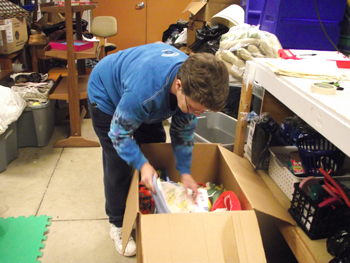
Old men, young children and couples line the lobby walls, waiting to enter the hospitality area where today’s meal of hot dogs, egg salad, and Johnny Marzetti is being served. While guests wait for their turn, the desk attendants catch up on their children’s lives, hear about life on the farm and praise the glory which is UDF ice cream.
One visitor, an elderly man with a weathered ball cap and a blue jumpsuit, sits across from me in the lobby. He says hello to me, then is approached by the woman behind the desk. Her short brown hair barely stirs and her glasses stay firmly perched on her nose as she walks towards him.
“Would you like some coffee today,” she said.
“No, I already had some,” he said. “I forgot my thermos, so I had to drink it real quick like. Do you have anything cold?”
“Why yes, let me get you some lemonade,” she said.
Upon her return he swigs the lemonade in two gulps and says, “Well that’s good. I’m gonna go shop, then maybe have some more of that.”
He hands a small parcel to the woman behind the desk and waits for her reaction.
“Oh, black walnuts,” she said with a smile on her face. “These are good for cakes and the like.”
“Yeah, I was just pickin’ and grinnin’,” he said, revealing the self-same grin.
Thirty minutes later he walked away with a bag of clothes and a wet whistle.
Trigg said that’s why the location is great. Like this man, many of the store’s guests either don’t have cars or money for gas, so they walk. While the organization doesn’t own the corner brick building, she said they’re hopeful that expansion and purchasing a building are in the future.
A short walk through the store highlights the necessity of expansion. Goods are crammed in every nook and cranny of the place. The store offers clothing, household goods, books, videos, shoes and other miscellaneous items to the public. These are spread on shelves, organized in bins, hung from racks and stacked in every corner.

He points out his favorite parts of the store, animatedly highlighting each important section on our walk. Parsons has been working with homeless individuals in the Columbus area for about four years, but said the free store is the best organization of its kind he has seen.
“It’s amazing how many families we’re able to serve,” he said, illustrating his point by showing me the line at the checkout station. “It’s a good social practice. It lets people see the other side of the street.”
With a solid spirit and admiration in his voice, Parsons spoke of two men who entered the store that morning who hadn’t eaten in three days. To him, it’s the little miracles and duties of the store which create immense change and satisfaction. He continued to focus on the good works of the free store throughout the journey. The path we walked through the store, which all shoppers take, began when we exited the hospitality area.
There’s a long hallway off the hospitality area which serves as one of three main shopping areas. To the right are shelves filled with books and videos, bins with clean underwear, and household items like towels, convection ovens and tea kettles. Lining the racks on the other side of the wall are baby clothes, boy’s clothing and girl’s clothing. These two white metal racks, one knee level and the other much higher, are divided by age level.
Leaving the hallway sends the shopper into another world where an elaborate mural covers the play space. Flower tendrils creep up the walls, lush bushes line the baseboards and sturdy oak trees grow around the windows to the outside. A squirrel and a rabbit frolic on one of the trees while grass cushions the feet of the tired shopper.
Tonka trucks have been tossed on the floor by the last child to come through. Bookcases are filled with smiling teddy bears and board games. These toys are calling out, waiting to be picked up and loved by a child in need. The toy room appears to be one of the more well-used sections of the store, because children linger and play.
Since there is a 15 minute shopping limit to ensure access to all shoppers, the children are unable to linger very long before making their toy selections and moving into the next room with their parents.
The next and final room of the store houses the adult male and female clothing racks. Similar to the set up in the hallway, three walls are lined with two tiers of clothing racks. Rather than age, these racks are organized by type. Dresses and skirts are on the right, sweaters and pants are across from the door. A central shelved island filled with shoes completes the visit for many. Next to the exit, two volunteers staff a long checkout station where items are counted, bagged and taken off of a shopper’s monthly limit.
20 articles of clothing, 8 accessories, 4 toys, 4 household items, 10 books and 1 winter coat. These are a few of the “per person” totals adhered to. Last year, the store distributed 57, 236 articles of clothing and 9,939 diapers, among a multitude of other things.
These numbers seem high until you hear that the store serves anywhere from 40 to 90 families each of the three weekdays it’s open. With so many families served, and 986 new families added in 2011, it’s hard to believe the racks are stuffed with clothing every day. Until you enter the back room.
The organized chaos which is the back room is evidence of the store’s productivity. Two large tables in the center provide a flat surface for volunteers to sort items and clothing. Three walls of the space are lined with large wooden shelves, towering up to the high ceilings. This place is the miniature warehouse which feeds the store. Crates, bins, boxes and bags are on the shelves. Some have hats, appliances, clothing, shoes, art supplies and even spare cups for the hospitality area. Opening the Employees Only door reveals a hornet’s nest of activity and for today, Wanda Davenport is the queen bee.
Davenport began volunteering at the store 15 months ago when she took her daughter’s place for the day. While she said she usually likes to stay out of the limelight, she admitted that she’d talk to anybody if it was about the store.
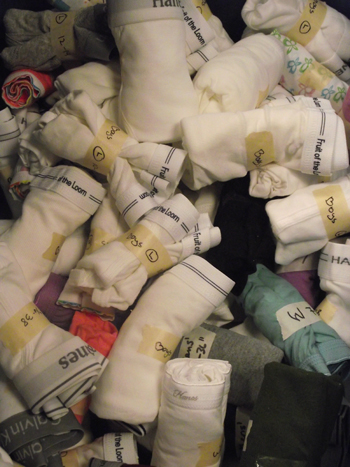
“This really is the coolest place,” she said. “The first day is confusing, but after that you’ll love it. When you think about the services we offer, it makes you realize that without us, some of these people would have nothing.”
Aside from the volunteers and the donations, Davenport said the children who come to the store are her favorite part.
“The kids are the greatest,” she said, while continuing to unpack boxes. “They’re really good and have a lot of fun. My 6 year-old granddaughter even volunteers here.”
In addition to the boisterous children, she said some of the most amazing events have occurred which make volunteering worthwhile. One day a young woman came in who was set to be married in a short while. Her August wedding was set for the beach and her colors had all been chosen. She walked into the store and found the perfect white dress, paired with a complimentary jacket. Several days later the store received flowers and boutonnieres. They were the bride’s colors.
“Now, you tell me where else something like that could happen,” Davenport said, raising her eyebrows and smiling wide beneath her glasses.
Volunteers like Trigg, Parsons and Davenport have helped the store function and grow, but a variety of events entice shoppers to come together for community bonding several times a month. A monthly bingo night is held for registered shoppers. The prizes of toilet paper and laundry soap may seem unrewarding for the average reader, but these items are vital for the families who visit the free store. The bingo prizes are provided by sponsoring churches, which also offer babysitting services during the event, and are items which can’t be purchased with food stamps. On the third Sunday of every month the store also offers an open church service.
Trigg’s passion for the bingo night and the Sunday services is clear. She beamed with pride when she informed me that no one is discouraged from attending or sharing at these services. Anyone with a message in their heart is welcome to share.
As she continued to greet customers, she spoke about the future of the store. The organization would like to expand on these events and become even more involved in the community. A children’s garden in Eastside Park, vacation bible school, a boys fishing event and Mommy & Me classes are on the horizon for the store.
Pausing in her sentiments, Trigg instructed the main door greeter to collect hats and caps from the shelves and put a bin next to the door.
“Silly goose, he needs to pick up a new coat with a hood today,” she said, lightly chastising one of her regular visitors.
For the rest of the afternoon, visitors to the store were offered caps to keep their heads warm in the winter weather.
“I wish I had a nickel for everybody who asks what this store is about,” she said, slowly shaking her head from side to side.
For Trigg and others, the store is a window into the lives of those who need assistance. It is a vehicle of change in the community and a helping hand for those in need. For those who ask, help will always be given at the store. Shoppers, volunteers, churches, donators and community members come together on the common ground this space has created. This is a place of love, caring and acceptance.
For some, the store appears to be on the wrong side of the tracks, in a less fortunate part of town. For the volunteers and the people who visit the store, it is definitely the right side. Perfectly located where it may do the most good, the store opens its doors and stretches its arms out, calling for all to come enjoy the benefits of a warm coat and a hot meal.
Author: Phoebe Christine Bush
Babbling Bishops at it again!
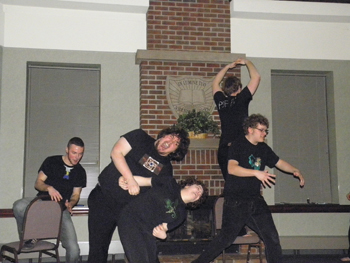
The Vagina Monologues: Performance raises awareness on women’s issues
The women of “The Vagina Monologues” asked where “all the good men are” last Friday and Saturday during two sold out performances in the Studio Theatre.
“The Vagina Monologues,” written by Eve Ensler, are a collection of monologues based on interviews Ensler conducted with more than 200 women about their personal experiences with subjects ranging from sexuality and female orgasms to global issues and rape culture.
In the last piece of the night, “Over It,” performed by senior Gretchen Curry, Ensler calls out to men in the line, “I am over the passivity of good men. Where the hell are you?”
Junior Macauley O’Connor said Ensler’s expression of frustration in this instance was “an absolutely just one.”
“I think that a lot of men honestly just don’t know what to do to help, and because of that they don’t do anything,” said O’Connor. “The thing that they don’t realize is that the opportunities are out there for anybody to help out with. I know that I’m not going to wait around for more people to get involved in supporting the cause. I’m going to do whatever I can to be as un-passive as possible.”
Sophomore Kate Johnson, one of the show’s producers, said the lines are “a direct challenge to all men to regard violence and rape as a very serious matter, as one that shouldn’t be taken lightly.”
“Many of the monologues focus on issues of violence against women by men, but a lot of them also focus on the fact that the men in our lives are vital and positive forces regarding our sexual and emotional well-being,” Johnson said.
“‘The Vagina Monologues’ want to make people aware that one in three women will be raped, sexually assaulted, or abused in her lifetime, but they also want to show that not all men are part of the problem, but rather the solution.”
Johnson said that a student who attended the performance for a class approached her after the show to tell her that he had never thought about rape in the way that it was presented in the production.
Johnson said the student told her he was glad he attended and he realized the seriousness with which women regard issues of violence and rape.
Junior Leah Shaeffer, co-director of the show and actor in the performance, said that one actress’s father approached her after the first night of the performance to tell her that those lines in “Over It” affected him as well.
“He was so affected by the line about the passivity of good men that he said his blood was boiling over and he just wanted to get out in the world and change every man’s perspective on violence against women,” Shaeffer said.
“Even if this man was the only person so affected by our performance, every minute and dollar that went into it was worth it.”
Senior Mollie Kalaycio, one of the performers in the show, said she felt some men did not fully grasp what the show was trying to say.
“A lot of guys came to see us, and we were really grateful,” said Kalaycio. “I feel like we touched a lot of them with the harsh facts about violence against women, but I also know that some of the men who saw it were a little uncomfortable and didn’t really grasp the reality of what we were saying.”
Kalaycio said she thinks if men who understood the show could talk about it with other men who might have been confused, the message could come across better.
Sophomore Gus Wood, a new member of the Women’s House, read the play before seeing the performance and said he “did not anticipate the waves of emotion that true heartfelt readings of the material would bring on.”
However, Wood said that as an active member of the feminist cause, he felt that some of Ensler’s views were “antiquated.”
“There is a large subset of men who are not only advocates against rape—many are victims of it,” said Wood. “I think the message was an important one, but a little women-centric. Hopefully men who do stand on these issues will stand up and join the fight based on the performance as a whole.”
Wood said he was moved by the women’s performances, and he hopes the campus sees the play as a “catalyst for more active roles in feminist causes.”

Senior Andrea Kraus, co-director and actor in the performance, said they decided to bring the production to OWU because of its relevance to the campus community.
“I wanted the show to reach an audience that included a diverse sampling of the OWU community,” said Kraus. “This means people who are already involved in these issues and people who have never even heard the term ‘rape culture.’”
Kraus said she hoped people took the idea that we are all connected away from the show.
“What happens to women in Bosnia affects the women of the Congo and the women in New Orleans and Delaware, Ohio,” she said. “Women need to support women. Men need to support women. We need to support each other no matter what our sex or gender might be.”
In addition to the play’s focus on rape and sexual violence against women, the show also aimed to de-stigmatize vaginas.
Sophomore Erin Parcells said that the monologues aim to let women know that “your vagina is your vagina.”
“Every female’s vagina is different and that’s okay,” said Parcells. “It’s about feeling good about your vagina and owning that.”
Junior Kaitlin Lentz said she hopes the performance changed the way people think about vaginas.
“It should not be a topic that is made trivial,” Lentz said. “It should be embraced and celebrated because where would we be without vaginas?”
Ninety percent of the proceeds from ticket sales and donations for the show is going to be donated to the foundation CHOICES for Victims of Domestic Violence, a program that addresses the needs of battered women and their children in Franklin County and additonally provides services to Delaware County.
Men’s basketball scores 3rd place NCAC finish
The Ohio Wesleyan men’s basketball team defeated Wabash on Wednesday night and Denison on Saturday afternoon to secure third place in the North Coast Athletic Conference and end the regular season. 
This also secured a first round home game in the NCAC tournament on Tuesday at 7:30 p.m. against Hiram.
At Wabash on Wednesday night, the Bishops won in double overtime. With 41 seconds left in the second overtime, junior point guard Andy Winters made a 3-pointer to put the Bishops up 81-79.
After a Wabash miss, senior guard Tim Brady was fouled and made a foul shot, putting OWU in the lead by 3 points.
Wabash was then fouled on a 3-pointer, but the last free throw was missed, ending the game with a final score of 82-81, the Bishops on top.
At halftime, Ohio Wesleyan had been up 32-22 against Wabash. However, Wabash was able to fight back in the second half to force the game into two overtimes.
Winters said the team needs to keep playing every possession as hard as they can during the second half.
“We need to keep attacking offensively and not worry about our first half leads,” Winters said.
Brady said, “We just need to continue to play hard for all 40 minutes, not for just one half or for most of the game.”
Coach Mike DeWitt said he hoped winning a tough game against Wabash would give the team confidence as the regular season finishes.
“Our mentality in the overtimes at Wabash was one of determination and perseverance,” DeWitt said. “We overcame some mental mistakes and poor decisions and beat a good team.”
Winters said the team worked together to win.
“Everyone contributed at an important time during the game and it has created more confidence because we beat a very good Wabash team,” Winters said.
In the final game of the regular season on Saturday against Denison, the Bishops won a game that was back and forth the whole time.
While Denison led 35-31 with only two minutes remaining in the first half, the Bishops were able to go into halftime with a 4-point lead.
Brady made some critical 3-pointers in the game, as he went 6-8 from the 3-point line and totaled 32 points for the entire game.
In the last minute of the game, the Bishops were able to hit seven free throws to seal a victory with a final score of 83-77.
DeWitt, Winters and junior forward Marshall Morris all used the word “persevere” to describe the wins against Denison and Wabash.
“In the end, we made just enough plays to beat a very good team,” DeWitt said. “We just kept coming up with a big possession.”
“We are beginning to develop a refuse-to-lose mentality,” Morris said.
Saturday was senior night, as Brady and senior forward Danny Flanegan were honored at the start of the game along with the senior members of the cheerleading squad.
“It felt great to win my last regular season game at home,” Brady said. “It’s hard to believe that was my last regular season game, but I have really enjoyed playing in Branch Rickey Arena for my four years here and winning on Saturday was a great way to cap it off.”
With those wins, the Bishops finish their regular season with a record of 19-6 and a conference record of 11-5.
This is one of the best records the OWU men’s basketball team has finished the regular season with since the 1988 season when the team went on to win the NCAA Division III championship.
“To win back-to-back tough games going into possibly both tournaments (the NCAC and NCAA) is big because I feel we are playing with some momentum,” Brady said. “Hopefully, we will catch fire and play our best basketball here these coming weeks.”

Little Rock Niner challenges the status quo
“Race has no true validity but we act as though it does,” Dr. Terrence Roberts said during a lecture in Benes Room A last Thursday at 7 p.m.
Roberts spoke first-hand about the rules of segregation and the fear that made people abide by them.
He was a member of the Little Rock Nine, a group of African American students who, in 1957, were the first to integrate Little Rock Central High School in Little Rock, Ark.
Gene Sludge and Shelby Austin, co-presidents of the Student Union on Black Awareness, asked Roberts to speak during Black History Month.
Dr. Rock Jones, president of OWU, introduced the speaker to the crowd.
“It’s not often that we have the opportunity to be with a true American hero—a person whose life has helped shape the way society and our lives are lived today,” said Jones.
Roberts was born in 1941 in Little Rock, Ark. He said he anticipated joining a community of people who loved him, but instead, he got a very hard message.
“It’s like people said, ‘Boy, there is something very wrong with you. You are clothed in black and the color is white, don’t you know that?’
“I figured I was in the wrong place,” Roberts said. “It occurred to me there had to be sane people outside of Little Rock, where everyone is insane. Well, I was wrong. Everybody in the United States was totally bonkers.”
Roberts said he quickly learned the difference between life and death and lived by learning the rules of segregation and obeying them.
“From 1619-1954, a 335 year span, we the people thought it’d be best to live compartmentalized lives built on race segregation,” Roberts said, “During that period it was in fact legal to discriminate. Constitutional, if you will, to discriminate in these United States of America. If you are discriminating for 335 years you get good at it; it becomes second nature.”
The 1954 Supreme Court Brown v. Board of Education case was not a popular decision, according to Roberts. One hundred congress members signed the southern manifesto saying, “We will do everything within our power to not permit implementation of this Brown v. Board decision.”
In 1954 Roberts was 13 years old and he said he was overjoyed by the monumental case. The law had changed. Unfortunately, he said, even though the law changed, nothing else changed with it. The social, cultural and ideological hatred remained embedded in the character of the country.
Roberts said he decided he did not have to play by the rules of segregation anymore.
“I was erroneous,” Roberts said. “When you’re 13, you do things. You just don’t think as you would as an ordinary human being. I violated one of the sacred laws of segregation. Chrystal Burger hamburger joint was a white owned restaurant, but they let black people go through the front door.
“I usually walked in, made my order, and it was always to go—the cardinal rule was blacks couldn’t sit down. Someone once joked that the way to end problems in the south would be to ‘get rid of all the seats.’ Anyway, I ordered a burger and fries and sat down. Immediately everything in the Chrystal Burger stopped as if someone has pushed pause on a VCR. All heads swiveled towards me. No words were spoken, but the nonverbal message was palpable. ‘Boy you better get some sense in your head.’”
Roberts said he suddenly awoke and realized what had happened. He cancelled his order and ran out.
“Something snapped inside me,” Roberts said. “I cannot continue to pretend to obey these rules. The year 1954 looms large in my head.”
Roberts said he remembers a boy being killed in Money, Miss., because he allegedly whistled or winked at a white female.
“He was savagely murdered.,” Roberts said. “His brutalized body displayed for the universe to see because his mom insisted on that. I was afraid I would wind up that way. There were so many stories like that.”
Two years later he joined the Little Rock Nine. Initially, there were more than nine. At a school assembly, Roberts said 150 students volunteered.
“The count was in fact off by one because I had both hands up,” Roberts said. “Then everyone went home– kids rethought their situation and parents vetoed the idea.”
Then there were 10 people left. Jane Hill was the student who left. According to Roberts, her dad got an employee call threatening to fire him if he sent Jane to school, so he pulled her out and lost his job anyway.
“He crossed the line just thinking of sending his daughter,” Roberts said. “People without kids in school lost jobs.”
Roberts said the most amazing thing to him was to watch the kids treat him and his friends with such disdain, as if to say, ‘we have the right to abuse you, don’t you know?’
“Even though we hadn’t discussed it together, the nine of us were committed,” Roberts said. “I’m pretty sure we all thought death was preferable to life under segregation. We were all eager to go to school; we loved school.”
The governor, however, was not eager to integrate. He called the National Guard to keep the children out and they did. Roberts and the other eight called the Little Rock police. He said he was almost killed that day.
“The situation was so dire that there was some talk of letting the mob hang one kid in order to get the other eight out,” Roberts said.
The third time the Little Rock Nine showed up to school, they were able to enter the building.
“Eisenhower sent in the army to help,” Roberts said. “Not because he cared about our welfare, though. The Arkansas governor had made noises about ceding from the union. But it’s okay to be a secondary beneficiary.”
With the army at his side in school, he said he and his friends still were almost killed. Children would run behind him, push him down the stairs and hit him with urine-filled balloons. He recalls being bruised and battered daily.
“The nine of us took a vow of nonviolence,” Roberts said. “It didn’t work like I thought. We were seen primarily as stationary targets. Running was my default option. I enjoyed running away. My mom once told me that lower animals like rats and cats and dogs fight because they can’t talk and negotiate so why would I ever want be like a rat?’ So I took my humanity and ran with it.”
The army was there until the end of year, according to Roberts. One boy graduated and the other eight were not allowed to attend because it was too dangerous. The next year, the six-time re-elected governor closed down all public high schools in Little Rock.
“I met the governor not too long ago,” Roberts said. We both appeared on Good Morning America. Backstage, I confronted him. ‘Your actions could have killed all nine of us.’ He said he had to do it otherwise he would not have been re-elected.”
Roberts said he went to Los Angeles, Calif., to live with his Grandma when the schools closed in 1958, and he persuaded his family to move there a few months after too.
“I technically am Californian at this point,” Roberts said. “I don’t pledge allegiance to geography, though. I am a citizen of the universe.”
At this point, Roberts began to accept questions, but there were rules.
“When asking questions, you are not allowed to use the word like,” Roberts said. “We are going to work on that tonight. This is your opportunity stop cold turkey. Stand and speak with your diaphragm.”
A student in the front row of the room asked, “Um why don’t you believe in race?”
Roberts’s response—“You have now been relieved of the need to say um.” He continued to say that the word race itself is new to the lexicon. It was first recorded in 1530.
“A group of pseudo-scientists developed it with a hierarchy from white to black and sold it to we the people and we bought it without thinking about it,” Roberts said. “Scientifically there has never been any such thing as a race. Every single human in the universe is unique.
“No one has been you and no one will be unless the people that got a hold of Dolly the sheep get a hold of you. Difference is the one thing that confuses us so we grab onto race. You too are a citizen of the universe. But we confuse it with all kinds of little lines.”
Another student asked, “Why is there still racism?”
Roberts said that even though slavery was abolished legally, it did not stop.
“If people wanted to change, we could,” Roberts said. “If you can do nothing else you can change you. Most people like to coast through life. You run the risk of being judged never to have lived. I take the best each person has to offer of whomever I am with and I let the trash go.”
Students also inquired about the importance of education to inner city black men.
Roberts said he was sent to school at the age of six. His first grade teacher said he had to become CEO of his own independent learning enterprise.
“When you take on executive responsibility nothing gets in the way of learning,” Roberts said. “You make decisions hourly to make it all happen. We need to find out more answers. It is imperative that we don’t buy the first thought that comes. We should challenge it and dig deeper.”
At the end of the Q & A, Roberts was presented with a book by an OWU class of ’82 alumnus, Byron Pitts. The book, called “Step Out on Nothing: How Faith and Family Helped Me Conquer Life’s Challenges,” was signed by Pitts and by everyone in the audience for Roberts to take away as a memory from his experience at OWU.
New football head coach excited to be in OWU family
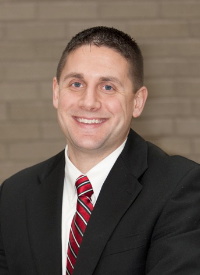
After Head Coach Mike Hollway left the program after 25 years, Watts beat out over 200 applicants to be chosen by the football head coach search committee as the head coach of the OWU football program, Athletic Director Roger Ingles said.
Ingles and many of the football players are excited about the energy and enthusiasm that Watts will bring to the program.
“Coach Watts will bring high energy, enthusiasm and passion for football,” Ingles said. “He will work very well with our current staff of coaches and will attract quality assistants to work with. Tom is a very good recruiter and has the highest of recommendations.”
Junior James Huddleston, a two-time letterman defensive end, said Watts will bring changes to the program that are not limited to the playbook.
“Coach Watts brings fresh ideas, not just on the field but in the classroom too,” Huddleston said. “He has implemented a system to help us track our academic success.”
Watts is excited for his future with the OWU football program.
“(OWU) has a great academic reputation with an excellent location,” Watts said. “It also has a very proud athletic tradition, which with those combined is a great opportunity to build an excellent football program.
“There has been a huge commitment from administration and alumni to build the program the right way and make it into a championship program.”
Sophomore Mason Espinoza, quarterback, is optimistic of the energy and excitement Watts will bring to the program.
Espinoza said one problem the team has had in the past is the retention of players.
He said he hopes Watts will be able to make the program a quality place where players can stay for four years.
“(Watts) is an energetic and personable guy and I think that he will definitely get the team and people around the community and on campus excited about OWU football now and in the future,” Espinoza said. “Coach Watts also has made a very good effort to connect with the current players and learn about us on an individual basis, which is something we respect.”
Watts stressed the importance of student athletes earning their degrees before trying to win championships.
“There are three things we have stressed to the team,” Watts said. “First, we’ve stressed the importance of earning an excellent degree from OWU. Second, we want our athletes to be prepared for the real world when they graduate.
“Finally, we want to win championships!”
Huddleston said the team aims to win the conference championship next season. He said he hopes Watts will help lead them in the right direction.
“The team is excited to move forward, Coach Watts will lead us in right direction,” Huddleston said. “He has a lot off experience and has been a strong part of turning around programs before.”
Watts said the team has been working hard this spring in preparation for next season.
Watts has a tremendous background in football, Ingles said. He is a fourth-generation coach from a family line of great football coaches.
“His great grandfather coached at Baldwin Wallace, his grandfather won state championships at Canton McKinley and his father coached at three different high schools,” Ingles said. “He has great experience, been very successful in his past positions.”
According to the OWU athletic homepage, Watts has spent the last three seasons at Baldwin-Wallace as an assistant coach.
Prior to coaching at Baldwin-Wallace, Watts served the 2008 season as the defensive coordinator and linebackers coach at Westminster College (Pa.).
He also served four seasons as the defensive coordinator and defensive backs coach at the University of Wisconsin-Platteville, Watts said.
Watts’s coaching career began at Waynesburg College (Pa.) as a co-defensive coordinator and graduate assistant coach in 2003, Watts said.
“I have no qualms about leaving the Baldwin-Wallace community,” Watts said. “It’s a great place with a lot of great people, but my family could not be more excited to be a part of the OWU family!”
OWU men’s tennis capitalize the Crusaders in singles, doubles
The Ohio Wesleyan’s men’s tennis team easily out-played the Capital University Crusaders in a non-conference match Feb. 17, winning 7-2.
Doubles
No. 1 OWU doubles duo junior John Rissell and sophomore Richie Karban demonstrated tentative superiority against the Crusaders. Their rapport helped propel them.
The duo’s cohesion rang clear, especially in pressing times, against the No. 1 Capitals doubles players Kenny Duncan and Tommy Stein.
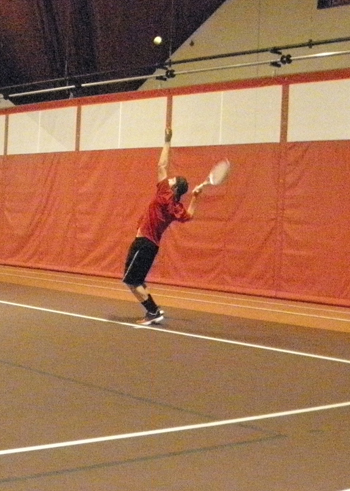
That is how the majority of the match went—general dominance by Rissell and Karban with short spurts of inconsistent shots remedied by excellent team cohesiveness.
From the forefront it was clear: the Rissell-Karban combo had the communication and togetherness their opponents lacked. Rissell and Karban’s moves were calculated and strategic while Duncan and Stein stayed stagnant. Rissell and Karban clinched the match, 8-4.
Rissell said he and Karban have been playing together for over a year.
Singles
OWU No. 1 junior Will Thieman dominated in singles against Capital No. 1 John Murray.
After the first game and a few self-motivating shouts: “I need to focus, I need to focus”– he was off. Pushing almost no unforced errors, Murray would have to win each point to beat Thieman, said Bishop tennis coach Eddie Echeverria.
Each game Thieman won in the first set seemed to cause visible redness in Murray’s face. Game after game after game after game went to Thieman. His opponent made false calls: “Out,” Murray indicated with an open finger. Murray’s own teammate on the sideline said, “That was in.”
Thieman goes on to beat Murray in the set 6-0. In the second set Murray fared a bit better, but was trumped by Thieman’s persistent consistency and collectedness, who won the set, 6-2.
Thieman said he has been playing tennis since he was 10 and has learned to stay mentally tough. Despite his high match scores he said he thought he would do better.
Overall
Echeverria said the team did very well. “It helps build confidence (for the upcoming match),” he said.
Echeverria said he expected an overall win, but warned that it could lead to player overconfidence.
“Once a man gets lazy, a man’s legs get lazy. Overconfidence brings error and the opponent feels they have a chance,” he said.
Despite a rough overall season, the Bishops swim strong at its end and break records
Despite Ohio Wesleyan’s eighth place finish in the North Coast Athletic Conference (NCAC) Championship, individual swimmers and divers finished the season strong.
The championship took place in Canton, Ohio over a four-day period starting Feb. 15 and ending on the 18. At the meet OWU swimmers and divers shattered records and ended the season on a good note.
OWU women’s 400 medley relay record, which has been in place since 1991, was cleared from the record books when senior Anne McComas and sophomores Kate Helfrich, Melissa Ward, and Olivia Gillison broke the record on the second day of the competition.
McComas said all members of the relay swam the best time they had all season. “It was very exciting to break the school record, we had tried for the record last year, but missed it in this event by a few tenths of a second,” she said.
“This year our goal was to go out and swim our best and if we got the record it would just be an added bonus to a great swim,” McComas said.
Freshman Matthew Mahoney led the Bishops with the best individual finish on the second day of the competition.
Mahoney said it felt great to know that his good performance helped set the tone for the meet.
“The team as a whole performed very well at conference and we had many individuals place high in their events and drop large amounts of time in their races,” Mahoney said.
He said that the swim team had many individuals step up and demonstrate how talented the team is and placed in the finals.
Senior Ali Russ said it was one of the best jobs they had done in her four years at OWU.
“Even though we have some of the fastest teams in the nation in our conference including Kenyon, Denison and a new addition this year, DePauw, we were able to swim fast and compete very well at our conference meet,” Russ said.
City Art Center seeking to pique public interest
Of the many restaurants, shops, and businesses to visit throughout downtown Delaware, one destination has eluded the attention of many OWU students.
The City Art Center on Winter Street, next to the Strand Theater, has been a part of the Delaware community for a short number of years. The center has drawn little attention from the OWU campus.
Students on campus, who have been living in the Delaware area for many years, have not made it a point to visit the gallery often.
Junior Liza Blakeslee said she had never been inside the building, but has looked at displays and advertisements in the windows.
The center is a non-profit organization that, according to its website, cityartcenter.org, has a “vision to be an active partner within the community
in developing an enriched cultural landscape”.
“It also intends to promote an awareness of and appreciation for the arts by trying to “foster creativity, spark new thoughts, and facilitate conversation…meanwhile establishing a network for artists and the public.”
In order to help promote the organization and its monthly exhibits, the center has partnered with the Strand Theatre for March’s exhibit, entitled, “The Strand Theatre: Scenes from Behind the Screen.”
According to Jessi Walker, the owner and operator of the City Art Center, this new event might be just the thing to bring in the right amount of attention.
“Aside from free popcorn and a rich cultural art experience, the public can catch glimpses into places within our beloved Strand Theatre that no one normally has access to,” said Walker.
Walker also said that, thanks to this upcoming event, the Center will have the benefit of exposing their art space.
“With each exhibition, more and more people find out what we are doing here, so that is very helpful to us. The CAC is operated 100 percent by volunteers in the community, so the more that people discover our space, the more people become involved in making it happen.”
The volunteers at the center said they hope students from OWU can come and check out what the art space has to offer and that they also hope to bring in more appreciation for art and how it operates through the community.
The upcoming event, “The Strand Theatre: Scenes from Behind the Screen” will begin on March 2 and the center will continue to show the exhibit throughout the month. To visit the center, stop by between 4 and 7 p.m. on Fridays and 2 and 7 p.m. on Saturdays.
Band of Skulls’ music like great lit
A car made Band of Skulls famous.
The Southampton, England, blues-rock quartet were virtual unknowns when the fine folks at Ford Motor Company wisely chose to use their song “Light of the Morning” in an ad for the 2011 Mustang. The track leads off the band’s 2009 debut “Baby Darling Doll Face Honey,” which was largely praised by critics.
“Light of the Morning” defines that record—it’s a short, loud jam that leaves the listener wanting more. That want is satisfied, as 11 tracks follow it on “Baby.”
The much-anticipated sophomore album, “Sweet Sour,” takes the band’s sound in a different direction, but by no means fails to achieve what Band of Skulls are best at: enticing.
The lead, title track achieves this end most successfully. The opening riff is easily the sultriest and most seductive I’ve ever heard.
Frontman Russell Marsden’s guitar work and the vocal harmony between him and bassist Emma Richardson are hypnotizing, the song’s abrupt, single-chord ending, serving as the snap of the fingers releasing listeners from its spell.
The final four tracks are an equally beguiling group. “Navigate” and “Hometowns” are so despondent and depressing that a song like “Light of the Morning” is necessary to prevent anyone from contemplating suicide.
The band delivers with the penultimate track, “Lies,” an audacious return to the prevalent sound of Baby. The record’s title is even referenced in the lyrics: “How can you not have a little fun/Doll face honey?”
After “Lies,” the only fitting end to the record would be equally vigorous, right?
Wrong.
“Close to Nowhere” is the bleakest of all 10 songs on “Sweet Sour.” Minimalistic guitar work and a dark, chanting rhythm conjured by drummer Matt Hayward partner with almost nihilistic lyrics about not knowing one’s purpose in life to bring back the wave of gloom “Lies” was supposed to send away.
The track is a prime example of the record’s darker, more personal lyrics.
“Lay My Head Down” deals with a reluctant relinquishing of love, and “Bruises” has overtones addressing the adverse, outward effects of mental illness. The stripped down compositions on these more somber songs succeeds at letting their lyrical themes show through.
The album as a whole, as its title suggests, is a bit of a paradox. The loud, forceful sound of “Baby” is staunchly present on Sweet Sour—“The Devil Takes Care Of His Own” sounds like it could have been on an AC/DC record, and the driving drums and swift guitar and bass of “You’re Not Pretty But You Got It Goin’ On” are just plain fun to listen to.
After the first time around the album, the listener is left somewhat wanting.
This could be a result of the contrast of expectations created by “Baby,” or the desperate thirst for optimism after hearing “Close to Nowhere.”
But this aural teasing is what Band of Skulls are best at. After a few more listens ,the effect they create becomes clearer, and the record gets better and better, but there are still no definite answers. Even after hearing it a multitude of times, it is still packed with wonderful ambiguity.
“Sweet Sour” is like a great piece of literature—the first time through it’s apparent there’s an incredible amount of depth and substance, but it’s uncertain exactly what it is.
After examining it again and again, the meaning is still unclear, but that ambiguity allows for the open development of different interpretations.
With “Sweet Sour,” Band of Skulls have definitively proven that they should never be underestimated.

